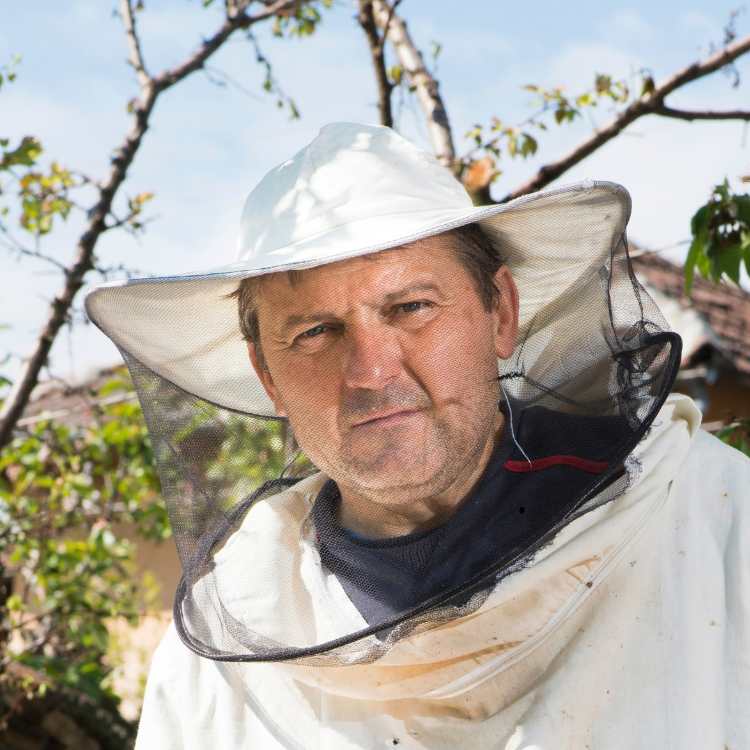As the cold season comes closer, individuals who keep bees are confronted with an important job to make sure their new baby bee population endures throughout the chilly months ahead. It's necessary to understand how to correctly look after fresh bee colonies during winter for keeping healthy nests and guarantee robust populations in springtime.
The Challenge of Winter Newborn Bee Care
Winter brings different difficulties for the survival of baby bees. Unlike mature bees, a newborn bee needs special temperature conditions and food support to grow in a proper way. The group has to keep an unchanging temperature near 95°F (35°C) in the nest where young are reared, no matter what temperatures are outside.
Creating the Perfect Environment for Newborn Bee Development
To provide the best conditions for a newborn bee to grow during winter, it is important that people who keep bees make sure there is sufficient insulation in the hive. The worker bees have an instinctual pattern of gathering around the young ones to give warmth, but more steps are needed to aid this natural behaviour. Think about these things when looking after a group of newly born bees:
- Temperature regulation through proper insulation
- Ventilation to prevent moisture buildup
- Wind protection using strategic hive placement
- Reduced entrance size to maintain heat

Taking care of your winter brood this winter
Nutrition Requirements for Winter Newborn Bee Care
During winter growth, a baby bee requires distinct nourishment. Whereas summer offspring can depend on fresh pollen and nectar, in winter the baby bees have to rely upon saved resources. It's essential to guarantee enough food storage as every newborn bee has its own requirements:
- High-quality stored pollen (bee bread)
- Sufficient honey reserves
- Supplemental feeding when necessary
- Clean water sources
Monitor Newborn Bee Development
Regular monitoring of newborn bee development during winter is essential. Beekeepers should check:
- Brood pattern consistency
- Signs of disease or parasites
- Food store accessibility
- Temperature maintenance
- Colony strength
Winter Newborn Bee Disease Prevention
Protecting newborn bee populations from winter diseases requires vigilance. Common threats include:
- Varroa mites
- Nosema
- Chalkbrood
- American and European foulbrood
Timing Matters in Newborn Bee Production
It is important to know when to promote or dissuade the production of brood. Bees born late in the fall must be given enough time for proper maturation before harsh winter conditions set in. Think about:
- Reducing brood rearing in late fall
- Ensuring adequate young winter bees
- Planning for early spring buildup
- Managing queen laying patterns
Emergency Winter Care for Newborn Bee Populations
At times, despite utmost efforts, winter crises impacting the survival of baby bees happen. Make sure to prepare:
- Emergency feed supplements
- Backup insulation materials
- Alternative ventilation methods
- Disease treatment options
Preparing for Spring While Caring for Winter Brood
While focusing on current baby bees care, prepare for spring buildup by:
- Monitoring colony strength
- Planning for early pollen sources
- Preparing equipment for expansion
- Evaluating queen performance
Best Practices for Supporting Winter Brood
To maximize winter brood survival, implement these strategies:
Maintain Strong Adult Populations
It's very important to have a strong worker bee population to keep the brood temperature right and provide food. Make sure your hive goes into winter with many young worker bees.
Proper Food Placement
Place honey and pollen supplies near the brood nest. This lets bees reach them easily in cold times when they cannot move much.
Minimize Disturbance
Please do not check hives excessively in cold weather. It can disturb the temperature control of the brood nest.
Monitor Moisture Levels
Excess moisture can be deadly for winter broods. Ensure proper ventilation while maintaining warmth.
Disease Prevention
Implement preventative measures against common diseases before they affect brood development.
Spring Preparation
While caring for winter brood, begin preparing for spring buildup by:
- Ordering replacement queens if needed
- Planning for equipment upgrades
- Preparing for spring feeding
- Monitoring weather patterns

Young bees during springtime
Common Winter Brood Care Mistakes to Avoid
- Poor ventilation management
- Inadequate food stores
- Excessive hive inspections
- Improper insulation
- Delayed disease treatment
Final Words
To successfully look after the baby bees, you need a cautious plan and consistent observation. If there are any potential problems, they should be addressed quickly. Understanding the unique requirements of the baby bees during the winter can help beekeepers maintain healthy colonies that will thrive as spring arrives. Keep in mind every colony is distinct and might require some tweaks to these broad principles according to local circumstances or the particular needs of certain colonies.
Success is connected to readiness, watching closely and stepping in on time when there's a need for it. By sticking to these steps and keeping alert about the requirements of your bee colonies, you can assist them not just survive winter but get stronger for spring that follows. Keep learning more effective methods and maintain touch with nearby communities who look after bees, as they could give advice suitable to local conditions and provide help too.





